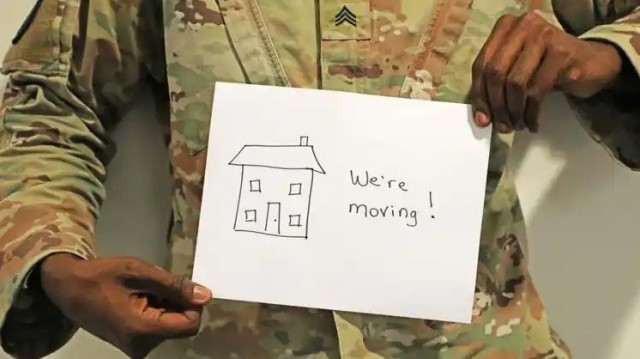By: Karen Shirer
PCS (Permanent Change of Station) season is ending for many military families (MFs). Yet, they still face important tasks to help them successfully navigate the process (Military OneSource [MOS], personal communication, August 10, 2023). Military families have many adjustments to make. Children likely find themselves in new schools. Military partners deal with the aftermath of the move. They may need to file a claim for property loss and secure affordable and quality child care. New support networks need to be built. The way in which a military family completes the PCS process is vital for their resilience and readiness.
Challenges and Opportunities of PCSing
PCSing involves a process for military families. They face many tasks and decisions both during and at the end of the PCR process. PCSing begins when a Service member (SM) receives an order for a change of duty station. These moves are different from short-term assignments in which SMs are temporarily away from their families. Typically, the new assignment lasts two to four years before they receive another PCS order. The new PCS location may be stateside or international (MOS, 2023).
PCSing provides both challenges and opportunities for military families. SMs have the opportunity to advance their careers or move their families to more desirable areas of the United States. Families see other parts of the country or world or possibly (re)unite with families or friends (NASEM, 2019, pg. 140).
PCS moves can be difficult even in the best of circumstances. For example, a relocation may send a family to a less desirable area. PCS moves can disrupt family life and cause added stress for military families. Families’ social support, spouses’ employment and career advancement, and consistent health care for members with special needs can all be disrupted (NASEM, 2019, p. 140). These disruptions can undermine families’ resilience. After the move, military families confront the important work of regaining and strengthening their resilience.
Rebuilding Resilience Following a Recent PCS
Resilience is the “ability to withstand and rebound from disruptive life challenges” (Walsh, 2003, p. 1). People often believe that resilience after a disruption is about “springing or bouncing back” to life before the disruption. In our case, springing back would mean that family life would go back to how it was before the PCS. Of course, returning to the life or the family that existed before the PCS is not possible; too much has changed or evolved.
Instead, think about rebuilding resilience after PCSing as “springing forward.” Families create a new sense of “normal” by adjusting to fit their new communities. Family resiliency models tell us that events like PCSing impact the entire family. These transitions are likely challenging when they happen alongside other stressors (e.g., health problems, loss of income, and/or lack of child care).
Family resiliency theory identifies processes families use to reduce their stress and help them adapt to the changes from PCSing. Three groups of processes enhance resiliency after PCSing (Walsh, 2016):
- Belief systems. Families work to see their challenges from PCSing as something they can overcome and as normal, given their circumstances. They share this experience with many other military families. They focus on what they control and accept what they can’t. They look for meaning from the experience through their family and religious traditions.
- Organization patterns. Families improve resiliency by being flexible with their family roles and family rituals. After the move, families want to establish new or revise/keep old family rituals and roles better suited to their new normal. Rituals provide an important way to connect with each other and to show mutual support and commitment to their family.
- Communication patterns. Families use these communication processes to promote resilience during and at the end of PCSing
- Sharing age-appropriate information with children (e.g., keeping children informed about developments, answering questions they may have).
- Encouraging family members to express their emotions and comfort one another.
- Engaging in shared decision-making and collaborative conflict management.
These three processes of family resilience need not be reserved only for the end of PCSing but during the entire move from start to finish. They also help families strengthen their resilience throughout and between all military transitions (e.g., deployment) and between these transitions.
OneOp professional development opportunities
Check out a few of the many resources on PCSing offered by OneOp for those who serve military families:
- LaFollette, V. & Lewis, Z. (2019, April 2), PCS series: Research and tools for supporting military transitions [On-demand webinar). OneOp. https://oneop.org/learn/30355/
- Crocker, A. & Brauner, R. (n.d.). Balancing loss and gains. OneOp. https://oneop.org/learn/pcs-caregiving-ep-1-balancing-loss-gains/
References
MilitaryOne Source. (2023, April 18). PCS: The Basics About Permanent Change of Station. https://www.militaryonesource.mil/moving-pcs/plan-to-move/pcs-the-basics-about-permanent-change-of-station/
Le Menestrel S. &, Kizer K. W. (editors). (2019). Strengthening the Military Family Readiness System for a Changing American Society. National Academies of Sciences, Engineering, and Medicine; Division of Behavioral and Social Sciences and Education; Board on Children, Youth, and Families; Committee on the Well-Being of Military Families. Washington, DC. https://www.ncbi.nlm.nih.gov/books/NBK547597/
Walsh, F. (2016). Family transitions: Challenges and resilience. In M. K. Dulcan (Ed.), Dulcan’s textbook of child and adolescent psychiatry (pp. 637–652). American Psychiatric Publishing, Inc.. https://doi.org/10.1176/appi.books.9781615370306.md31
Writer Biography
 Karen Shirer, previous Associate Dean of the University of Minnesota Extension Center for Family Development. Karen is also the parent of two adult daughters, a grandmother, a spouse, and a cancer survivor.
Karen Shirer, previous Associate Dean of the University of Minnesota Extension Center for Family Development. Karen is also the parent of two adult daughters, a grandmother, a spouse, and a cancer survivor.
Photo source: U.S. Army | Brandy Cruz, Fort Hood















